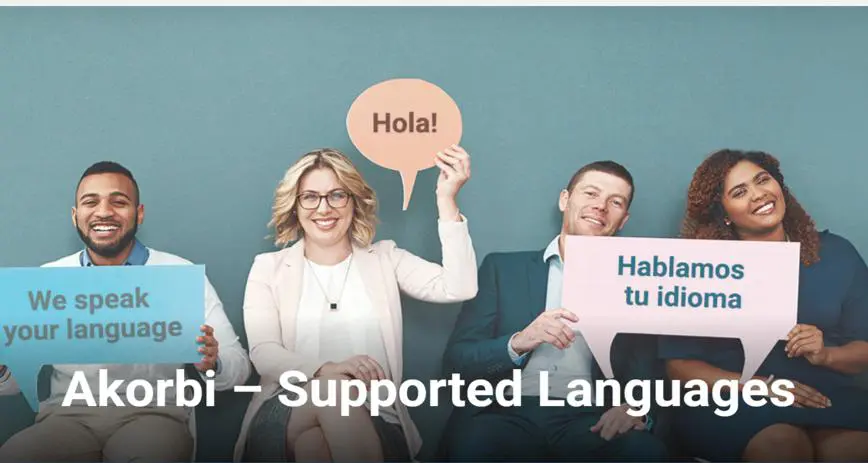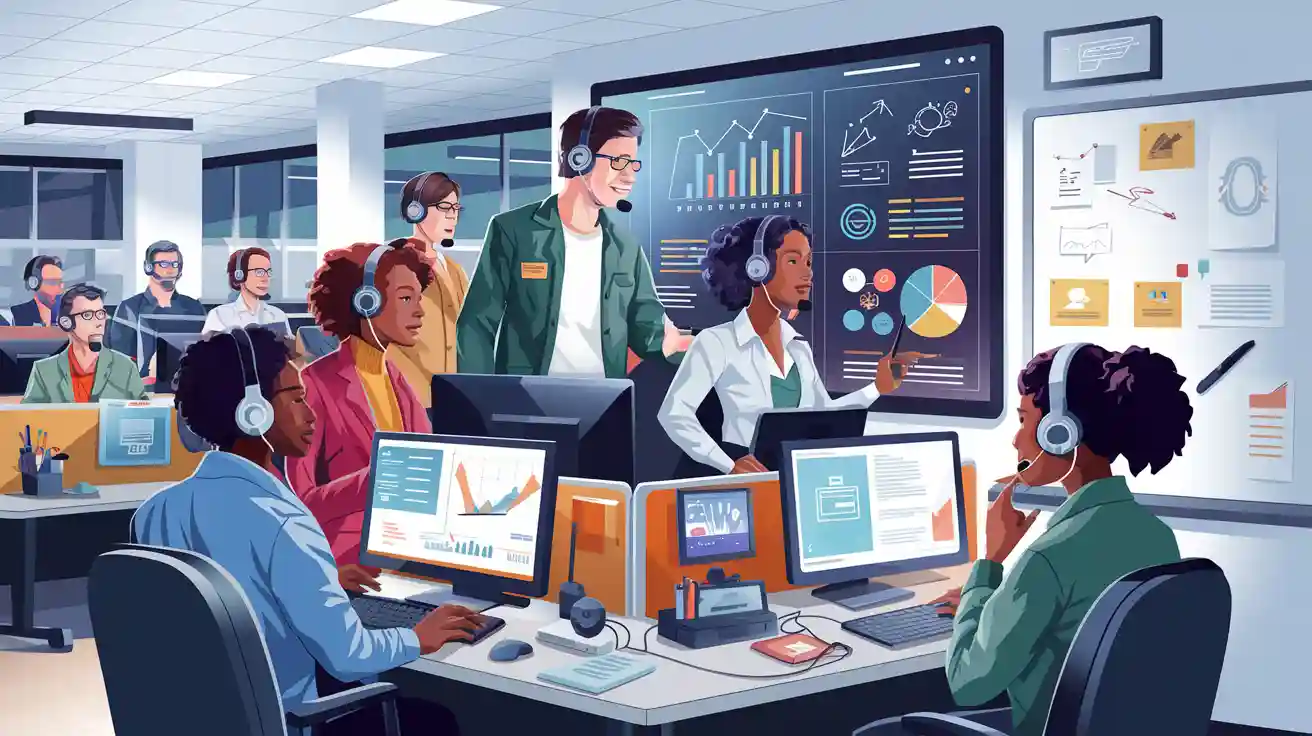In 2025, free call center training tools are very important. They help agents give great service, making customers happier. For example:
31% of customers think skilled agents make their experience better.
Happy agents are 8.5 times more likely to stay at work.
Trained agents solve problems well, earning customer trust.

New training methods use technology to improve learning. Blended learning mixes old ways with digital tools. AI tools like HeroDash give instant feedback to agents. These tools help agents learn about products and services faster. This makes work smoother. To see how HeroDash can help your training, Request a Quote today.
The Importance of Call Center Training in 2025
Why Training is Crucial for Call Center Success
Training is key to making call centers successful. It helps agents learn how to talk to customers better. Without training, agents might fail to meet customer needs. This can make customers unhappy. Companies that train their staff see big improvements. For example:
Evidence | Description |
|---|---|
94% of employees | Stay longer at jobs that help them grow. |
218% higher income | Companies with training earn more than those without. |
24% increase in profit margin | Training boosts company profits by this amount. |
Also, 70% of people think call centers should train agents more. This shows how important it is to give agents the right tools and knowledge. Training also saves money. A 1% better First-Call Resolution lowers costs by 1%.
Benefits of Free Training Resources for Businesses and Agents
Free training tools are helpful for businesses and agents. They are cheap ways to improve skills and work quality. Trained agents handle calls better, making customers happier. Some benefits include:
Happier customers because of skilled agents.
More engaged and creative employees.
Lower costs, which increases profits.
Numbers show these benefits clearly:
Statistic | Description |
|---|---|
Customer satisfaction improves when agents are happy. | |
56% | Call centers work better with happy agents. |
39% | Training helps keep agents from quitting. |
Using free tools, companies can train teams without spending too much. Agents also grow their skills, making them happier and more likely to stay.
Emerging Trends in Call Center Training
Training methods are changing in 2025. Companies now use new ideas to meet customer needs. Some new trends are:
Training Trend | Description | Growth Pattern |
|---|---|---|
Ongoing Training | Agents keep learning to meet customer needs. | More training hours added. |
Mentorship Programs | Experienced agents guide new workers. | More companies using this method. |
Soft Skills Development | Focus on empathy and problem-solving skills. | Becoming a bigger part of training. |
Remote Work Training | Teaching agents to work well from home. | Remote training is growing fast. |
These trends show training is becoming more flexible and personal. For example, soft skills training helps agents listen and care more. Remote training teaches agents to help customers from anywhere. By using these trends, call centers can stay competitive and work better.
Criteria for Picking the Best Training Tools
Important Things to Consider
Ease of Use and Cost
When picking call center training tools, ease and cost matter. Free tools should be simple to use and easy to find. They should work online or offline for all team members. For example, YouTube has free videos agents can watch anytime. Cost is also a big factor. Free tools let you train your team without spending too much. This is great for small businesses or new companies. Even part-time or beginner agents can learn important skills without extra costs.
Good Content That Fits Your Needs
The quality of training materials affects how useful they are. Good content should match your company’s products and services. This helps agents learn skills they can use at work. For example, training on communication and problem-solving gets agents ready for real situations. Studies show 60% of failed first-call resolutions happen because agents lack tools or data. Picking tools that fix these problems can improve customer service and call handling.
Hands-On Learning and Easy to Use
Training tools should include hands-on learning to be effective. Look for tools with role-playing, real-life scenarios, or interactive lessons. These help agents practice what they learn right away. For example, First Call Resolution (FCR) and Average Handling Time (AHT) can show how well agents use their training. Higher FCR means agents solve problems better. Lower AHT shows they work faster and more efficiently.
How to Find the Right Tools
Finding the best training tools takes planning. Start by checking what your team needs and where they need help. Use data to see how well training works. For example:
Match Key Performance Indicators (KPIs) to your business goals to track progress.
Collect feedback often to improve training methods.
Check metrics like Customer Satisfaction Scores (CSAT) to see if training helps customers.
A clear plan, including checking needs and tracking progress, keeps training useful. This process helps you adjust to customer needs and prepares your team for challenges.
Best Free Call Center Training Resources in 2025
YouTube Training Videos for Call Center Agents
YouTube has many free videos for call center training. These videos teach skills like talking, listening, and solving problems. You can learn how to handle calls or use social media for support. Some videos show real-life examples to help you respond quickly to customers.
One great thing about YouTube is its flexibility. You can watch videos anytime, which helps both full-time and part-time workers. Whether you’re new or experienced, these videos help you improve. Channels like “Call Center Coach” and “Customer Service Academy” have playlists that match training goals.
Free resources for digital-first agents are key to meeting customer needs for fast and personal service.
National Emergency Number Association (NENA) Resources
NENA gives free tools for emergency call center workers. These include webinars, guides, and lessons for handling tough situations. They teach problem-solving and listening skills, which are useful for quick decisions.
NENA’s training shows why knowing your company’s services is important. This helps you give better customer service. Their tools also explain how technology helps in call centers, preparing you for future challenges.
International Customer Management Institute (ICMI) Training
ICMI provides free tools to improve call center work. They offer eBooks, webinars, and articles on key skills. You can learn to solve problems faster, handle calls better, and make customers happier.
ICMI’s resources are great for agents who want to do better at work. They teach how to manage hard customer issues and use call center tools well. These tools also help you connect training to company goals, making you more effective.
Aspect | Description |
|---|---|
Why Training Matters | Training programs help agents improve their skills. |
Skill Growth | Learning new skills keeps agents ready for changes. |
Free Tools | Many free tools help digital-first agents train better. |
Using these free tools can help you grow and become a better agent for customers.
Coursera Free Customer Service Courses
Coursera has free courses for customer service workers. These courses teach skills like talking, listening, and solving problems. They are created by top schools and organizations, ensuring good quality. For example, the “Customer Service Fundamentals” course shows how to handle calls, fix issues, and give great service.
Coursera is very flexible. You can learn anytime, which helps both full-time and part-time workers. Many courses also give certificates when finished. These certificates can improve your resume and help you find better jobs. Whether you are new or experienced, Coursera’s courses keep you updated on the latest call center training trends.
Tip: Choose courses that match your company’s services for better results.
BranchTrack Scenario-Based Learning
BranchTrack uses real-life scenarios to teach customer service skills. It helps you practice tough situations in a safe way. The focus is on skills like listening and solving problems. By using these scenarios, you can prepare for better customer interactions.
Here’s how BranchTrack helps call centers:
Metric | Target Range | Business Impact |
|---|---|---|
First Call Resolution (FCR) | 80-90% | Fewer repeat calls, happier customers |
Average Handle Time (AHT) | < 5 minutes | Faster calls, lower costs |
Customer Satisfaction (CSAT) | 4.5-5.0 out of 5 | Loyal customers, better reputation |
Agent Retention Rate | > 85% | Fewer new hires, stronger teams |
Scenario-based learning improves FCR and AHT, showing how well agents solve problems and handle calls. Using BranchTrack can boost your performance and improve customer satisfaction.
Callnovo’s HeroDash for Call Center Training & Performance Optimization
HeroDash, Callnovo’s AI tool, changes call center training. It mixes old methods with digital tools for better learning. The platform uses VR and AR to create real-life situations, helping you learn about products and services. HeroDash also supports ongoing learning with regular coaching and feedback.
This software works with CRM systems to track skills and give real-time data. It keeps agents focused on business goals while improving their work. HeroDash also offers training in many languages, making it great for global teams. By using HeroDash, you can improve call center work and give better customer service.
Why HeroDash? It’s perfect for small and global businesses, offering tools to improve customer service. Learn more about HeroDash here.
How to Choose the Right Training Resource
Understanding Your Call Center’s Needs
Knowing what your call center needs is the first step. Look at how your team performs and find areas to improve. Tools like Insight7 and Salesforce Service Cloud can help. They show agent skills and create training plans. For example:
Tool | How It Helps with Training Needs |
|---|---|
Insight7 | Tracks performance and personalizes agent training. |
Zendesk | Gives customer service lessons for better learning. |
Freshdesk | Manages training tasks and tracks progress. |
Genesys | Improves skills across different channels. |
Salesforce Service Cloud | Builds training plans with performance reviews. |
These tools check metrics like First Call Resolution (FCR) and Average Handle Time (AHT). This shows where agents need help and matches training to your company’s services.
Picking Resources That Match Goals
Good training tools should match your business goals. Choose ones that make customers happy, save money, and keep agents working longer. For example:
Connect training to company goals so agents know their role.
Use real call examples to help agents remember skills.
Update training often to meet new customer needs.
Metrics like FCR, AHT, and Customer Satisfaction Scores (CSAT) show training results. A high FCR (80-90%) means fewer repeat calls. A low AHT (<5 minutes) means faster work. Custom training helps agents give better service, improving your business.
Tips to Make Training Better
To make training work well, focus on keeping it fun and flexible. Try these ideas:
Track Performance: Use KPIs like CSAT and FCR to measure success.
Find Weak Spots: Use data to see where agents need help.
Practice Skills: Use role-play and real-life examples to teach.
Keep Learning Going: Update training to match new challenges.
Use Feedback: Check KPIs to improve training programs.
Interactive tools like HeroDash make learning fun and useful. AI tools can give personal lessons, keeping your team ready for anything.

